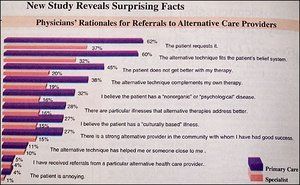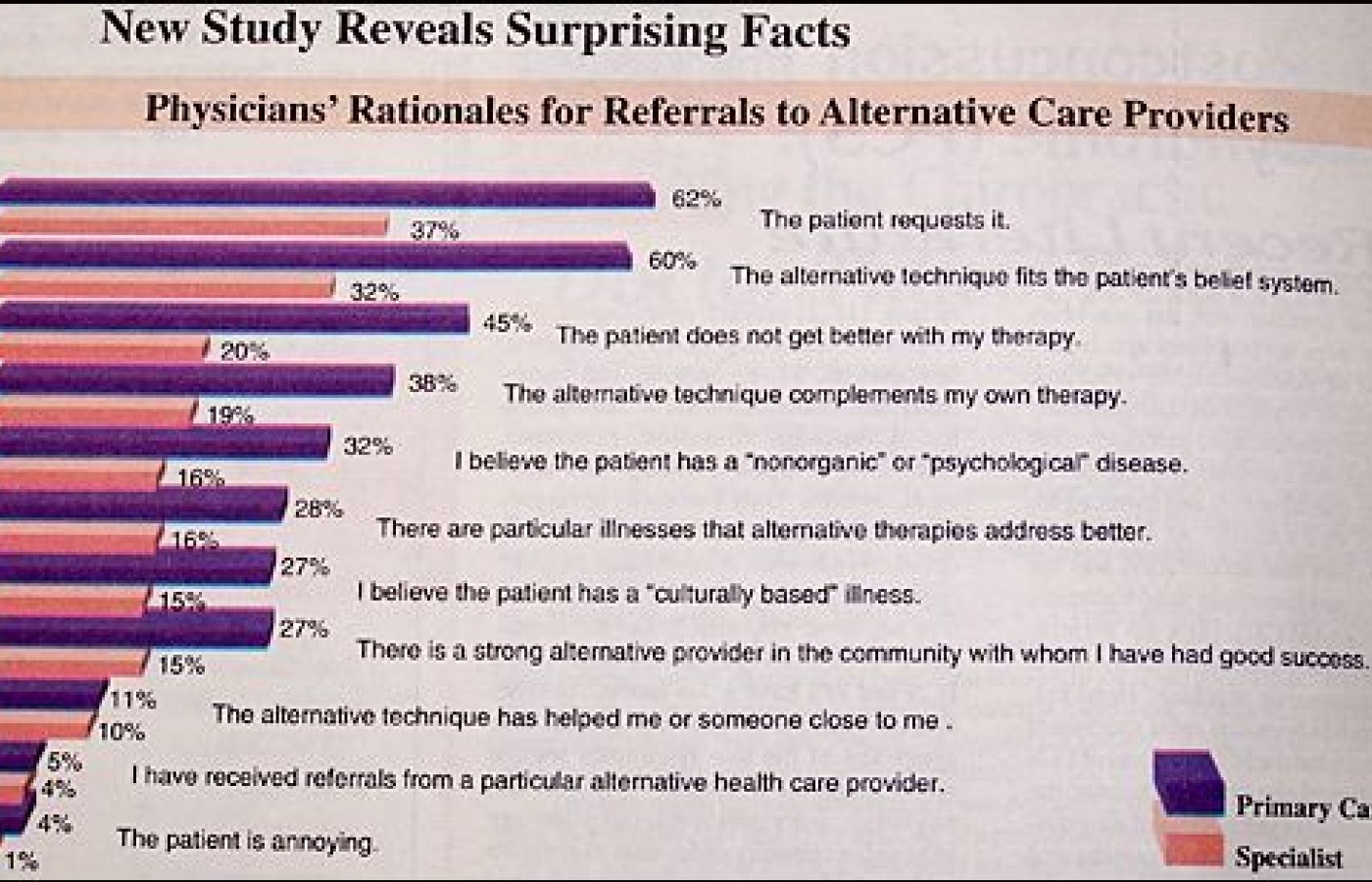On Oct. 21, 2025, a judge in Florida issued a groundbreaking decision in Complete Care v State Farm, 25-CA-1063. It concerns a fact pattern that many chiropractic doctors have faced wherein an insurer, such as State Farm or Allstate, decides to simply stop paying all claims submitted by a healthcare provider.
| Digital ExclusiveWhy Do MDs Refer Patients to "Alternative Therapies"?
A study published in a recent issue of The Journal of Family Practice1 looks at the habits of medical physicians in referring patients to "alternative therapies." While the release of the acute low back guidelines2 by the Agency for Health Care Policy and Research (AHCPR) would greatly fuel the argument that spinal manipulation should no longer be considered "alternative," research publications still consider consider it so.
The survey curiously included MDs from Washington state, New Mexico, and southern Israel (56 percent were specialists; 44 percent primary care). Over 60 percent of those responding had made referrals to alternative providers in the past year; 48 percent referring in the past month. Unfortunately, there wasn't any measurement of how many patients were referred.
The list of "alternative therapies" included: acupuncture; homeopathy; hypnosis; folk healing; movement therapies (e.g., yoga, Alexander technique, and dance therapy); spinal manipulation; spiritual therapies (e.g., faith healing); and touch therapies (e.g., reflexology or therapeutic massage)." Spinal manipulation was listed as the "most common referral" by 15 percent of the medical physicians.
The paper cited the work of Daniel Cherkin et al.,3 which "revealed that 57 percent of physicians admitted to encouraging their patients to see chiropractors, and that a large majority acknowledged chiropractic's effectiveness for some patients." But there seems to be a dramatic difference between encouraging patients to see a chiropractor and an actual referral.
Other interesting information gleaned from the study:
- "78 percent of respondents did not report a preference for either physician or nonphysician providers of alternative services."
- "Physicians who adopt complementary therapies into their practices (23 percent of the total) have higher rates of monthly and yearly referrals"
- "5 percent (of MDs) practice spinal manipulation."
- "Primary care physicians were also more knowledgeable about alternative practices and believed them to be more beneficial, although these results are not statistically significant."
Perhaps the most important information generated by this study are the rationales for MDs to refer to alternative care givers (please see graph). Patient requests and beliefs were the first two reasons for referral. Primary care physicians were much more willing than the specialists to refer based on patients' requests and beliefs. Interestingly, having received referral from an alternative therapist was a referral rational for only four percent of the MDs.
The list of referral rationales should dictate the actions of DCs who wish to encourage referrals from MDs. This study provides excellent information for those who wish to develop working relationships with local medical physicians.
References
- Borkan J, Neher JO, Anson O, Smoker B. Referrals for alternative therapies. J Fam Pract 1994; 39:545-550.
- Bigos S, Bowyer O, Braen G, et al. Acute Low Back Problems in Adults. Clinical Practice Guideline No. 14. AHCPR Publication No. 95-0642. Rockville, MD: Agency for Health Care Policy and Research, Public Health Service, U.S. Department of Health and Human Services. December 1994.
- Cherkin D, MacCornack FA, Berg AO. Family physicians' views of chiropractors: hostile or hospitable? Am J Public Health 1989; 79:636-7.




